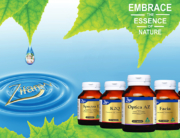These sweeteners are found in a vast majority of products – from drinks to lollies and even in toothpaste. They are actually carbohydrates and part of their chemical structure looks like sugar and the other part like alcohol.
These sugar alcohols are like sugar in some ways, but they are not completely absorbed by the body. Because of this, the blood sugar impact of sugar alcohols is less and they provide fewer calories per gram. Additionally, sugar alcohols don’t promote tooth decay as sugars do, so are often used to sweeten chewing gum.
These sugar alcohols are far from healthy and can actually cause many digestive complaints. Maltitol is broken down into glucose and sorbitol. Some of the sorbitol is converted to fructose in the liver while the remainder feeds pathogenic bacteria in the colon resulting in diarrhea, wind, cramping and bloating. All sugar alcohols have this effect!
If you are watching your weight then read every single label. Often temptingly labeled “low carb” or “low sugar”, these products will contain sugar alcohols which should be completely avoided.
Comparison of Sugar and Sugar Alcohols
| Ingredient | Sweetness | GI | Cal/g |
| Sucrose (sugar) | 100% | 60 | 4 |
| Maltitol Syrup | 75% | 52 | 3 |
| Hydrogenated Starch Hydrolysate | 33% | 39 | 2.8 |
| Maltitol | 75% | 36 | 2.7 |
| Xylitol | 100% | 13 | 2.5 |
| Isomalt | 55% | 9 | 2.1 |
| Sorbitol | 60% | 9 | 2.5 |
| Lactitol | 35% | 6 | 2 |
| Mannitol | 60% | 0 | 1.5 |
| Erythritol | 70% | 0 | 0.2 |










































































































































